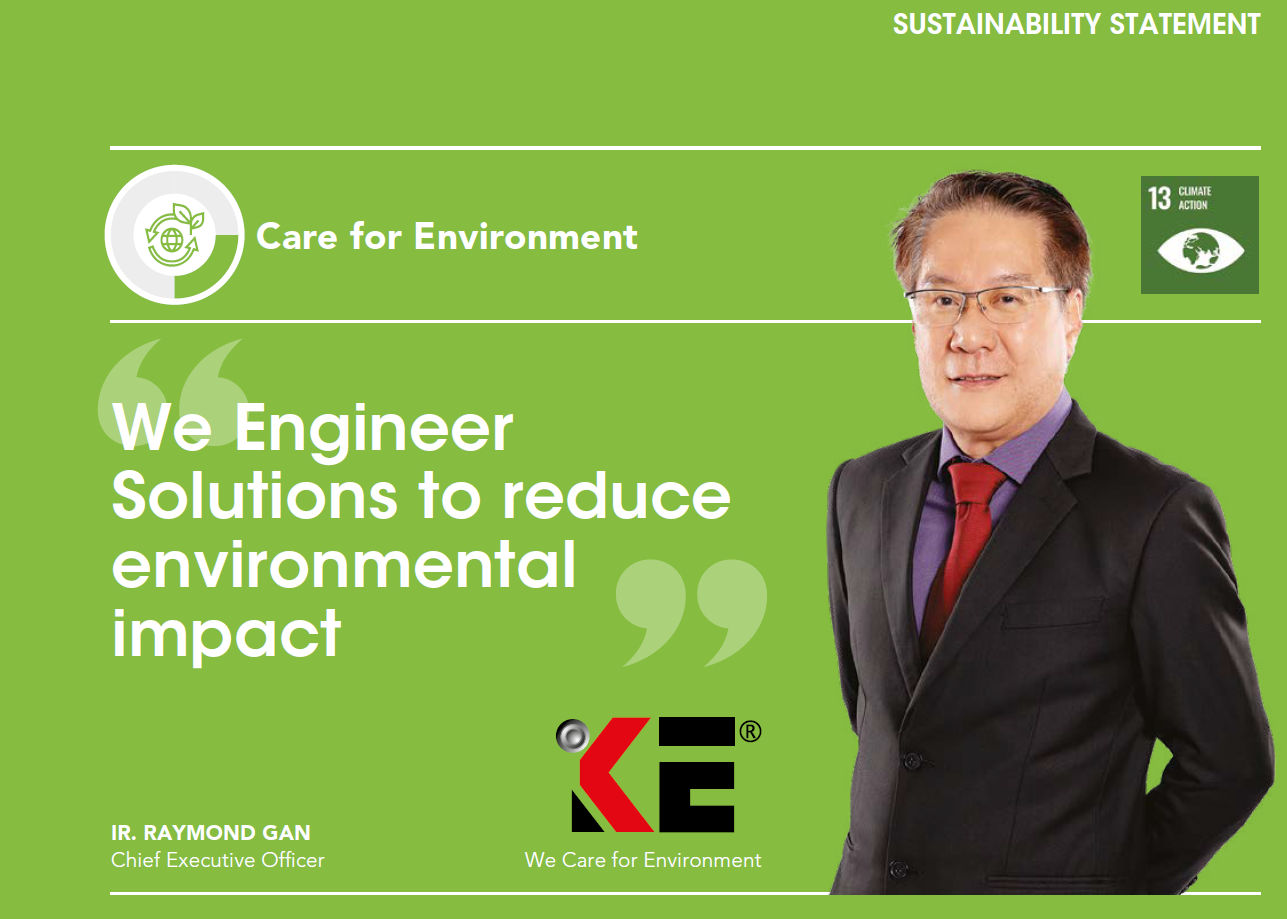
At Kelington, we empower our customers to achieve their decarbonisation goals by implementing low-carbon technologies that reduce emissions and enhance resource efficiency. Through tailored
engineering solutions, we collaborate closely to identify opportunities for carbon reduction, optimise processes, and integrate sustainable practices across operations. Our approach not only minimises environmental impact but also drives long-term value, enabling customers to transition toward a low-carbon future.
S1 PREVENTING CLIMATE CHANGE
● Our Role in Low Carbon Future
● Climate related Disclosures
– Governance
– Strategy
– Managing Climate Risks and Opportunities
– Metrics & Targets
– Financial Impacts & Performance
S2 POLLUTION & WASTE MANAGEMENT
● Pollution Prevention & Compliance
● Sustainable Waste Management Practices
● Waste Management Overview : Generation & Recycling Summary
● Scheduled Waste Management
● E-Waste Management & Employee Awareness
S3 RESOURCES MANAGEMENT
● Pathway to 100% Renewable Energy by 2045
● Water Management & Sustainability Commitment
S4 SUPPORT BIODIVERSITY
● Key Initiatives & Strategies for Biodiversity Conservation
Alignment of Decarbonisation Strategy with Climate Change Strategy
KELINGTON’S BOLD STEPS TOWARDS A SUSTAINABLE FUTURE:
ADDRESSING CLIMATE CHANGE
Kelington recognises the urgent need to address climate change
and is committed to reducing carbon emissions through a structured
decarbonisation strategy. Our approach integrates sustainable
engineering solutions, enhances operational efficiency, and fosters
stakeholder collaboration to minimise environmental impact while
driving business value.
This decarbonisation strategy aligns with our broader climate action
efforts, ensuring that every aspects of our operations contribute to a
low-carbon future. Below is a breakdown of how both strategies align:
IMPLEMENT VALUE ENGINEERING FOR SUSTAINABILITY
Climate Change Link
Integrate sustainability principles into the value engineering
process to optimise resource efficiency and minimise
environmental impact.
Decarbonisation Impact
Applying value engineering in design to optimise systems and
processes, reducing carbon footprints while maintaining cost
efficiency and performance.
DEVELOP ENGINEERING SOLUTIONS TO MINIMISE ENVIRONMENTAL IMPACT
Climate Change Link
Designs solutions to mitigate adverse environmental effects.
Decarbonisation Impact
Implements low-carbon technologies to reduce emissions and
enhance resource efficiency.
MEASURE AND ANALYSE GREENHOUSE GAS (“GHG”) EMISSIONS
Climate Change Link
Establishes a data-driven approach for emission reduction
targets.
Decarbonisation Impact
Tracks and reports GHG emissions, identifying reduction
opportunities and implementing mitigation strategies.
ENHANCE ENERGY EFFICIENCY
Climate Change Link
Supports global efforts to reduce reliance on fossil fuels.
Decarbonisation Impact
Invest in renewable energy technologies and energy-efficient operational practices to optimise energy use, reduce emissions, and lower carbon footprint.
MINIMISE WASTE GENERATION
Climate Change Link
Supports a circular economy to reduce environmental
degradation.
Decarbonisation Impact
Implements waste management strategies, including recycling,
reuse, and sustainable disposal, to minimise landfill emissions.
RAISE AWARENESS OF THE URGENT NEED TO ADDRESS CLIMATE CHANGE
Climate Change Link
Ensures that all stakeholders understand their role in climate
mitigation.
Decarbonisation Impact
Engages employees and partners in sustainability initiatives,
fostering a culture of environmental responsibility.
